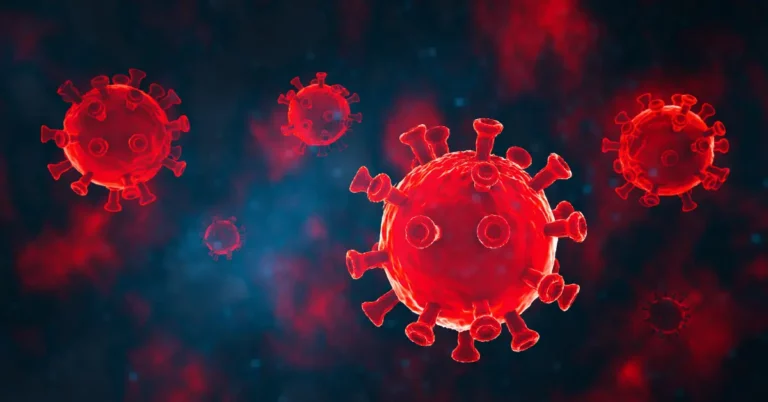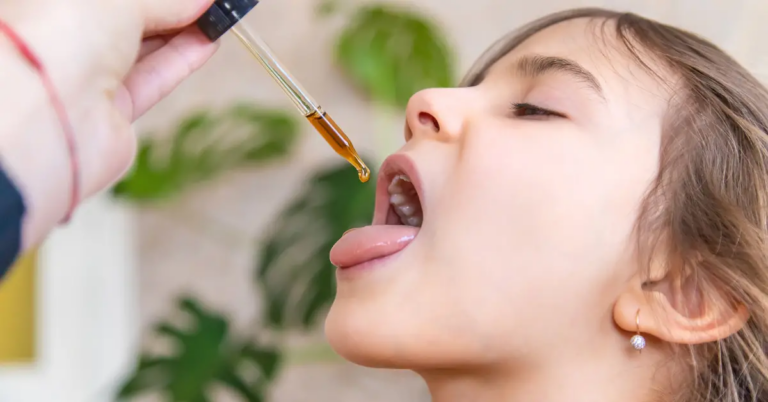Water, our most essential resource, is more than just a basic necessity. It fuels our bodies, nourishing every cell, and supports countless physiological processes. Across the globe, regardless of culture or status, the pursuit of clean drinking water is universal, signifying its vital role in maintaining health and wellness.
In today’s fast-paced, urbanized world, bottled water has become the standard for convenience and perceived purity. Many choose it over tap water, trusting in the imagery of untouched springs and glaciers adorning the bottles. But recent findings have challenged this trust, uncovering the presence of toxic chemicals in some popular bottled water brands. This revelation calls us to re-examine our choices and the assumptions we make about the safety of our drinking water.
The Illusion of Purity: Bottled Water’s Hidden Risks
Bottled water, with its images of crystal-clear springs and pristine wilderness, has captivated our trust. Its convenience and the aura of purity make it a preferred choice for many seeking reassurance against the backdrop of often-questioned municipal water supplies. This perception positions bottled water as a safe haven, a symbol of cleanliness and health.
However, recent studies have begun to unravel this perception. Investigations have revealed that numerous bottled water brands contain toxic chemicals, challenging the assumption of their inherent purity.
These aren’t mere harmless additives; they’re substances linked to serious health issues like neurotoxicity and thyroid dysfunction. The presence of these toxins in something as fundamental as our drinking water is a stark reminder: when it comes to what we consume, we must not take safety for granted. Vigilance and informed choices are paramount.
Understanding the Health Implications of Contaminated Water
The discovery of toxic chemicals in bottled water is not just alarming; it has profound implications for our health. Substances like neurotoxins and endocrine disruptors, though invisible to the naked eye, can have lasting and severe impacts on our bodies.
Recent research has brought to light some concerning facts about toxic chemicals in bottled water and their significant implications for our health. Here’s a look at some key studies:
1. Neurotoxicity and Fluoride: A study highlighted in Environmental Health discussed neurotoxicity resulting from elevated fluoride exposure. This research showed that fluoride could induce neurochemical, biochemical, and anatomic changes in the brains of treated animals. The study also pointed out fluoride as an endocrine disrupter, affecting thyroid function at relatively low intake levels, especially in individuals with iodine deficiency. [1]
2. Fluoride’s Impact on Learning and Memory: The National Toxicology Program (NTP) in 2016 reviewed fluoride neurotoxicity, particularly regarding learning and memory. It was found that at water concentrations higher than 0.7 mg/L, there was a low-to-moderate level of evidence of neurotoxicity in animals, especially in those exposed as adults. This finding indicates potential concerns about neurodevelopmental effects in humans. [2]
3. Fluoride and IQ in Children: A study conducted by researchers, including those from the Harvard School of Public Health, analyzed the effect of fluoride on children’s cognitive development. They collated epidemiological studies of children exposed to fluoride from drinking water and found a significant association between high fluoride content and lower IQ scores in children. This study underscores the potential risk of even slight increases in fluoride exposure for children’s brain development. [1,3]
These studies collectively suggest a need for cautious examination of the chemicals in our drinking water, especially concerning their impact on neurological development and cognitive functions. They also emphasize the importance of considering cumulative exposure to these chemicals and their potential long-term effects on health.

Tracing the Source: How Toxins Enter Bottled Water
The presence of harmful chemicals in bottled water is a multifaceted issue, stemming from various stages in its journey from source to consumer. Let’s explore these key factors:
Journey From Natural Sources
Most bottled water originates from natural sources like springs or aquifers. However, these sources aren’t always pristine. Rainwater runoff, carrying pollutants from surrounding areas, can contaminate these water bodies.
Additionally, airborne pollutants can reach even the most remote sources over time, subtly degrading their quality.
Impact of Industrial Activities and Filtration Challenges
The proximity of water sources to industrial activities is a significant concern. Industries often release chemicals that can seep into groundwater or nearby streams. While most bottling plants employ filtration processes, not all are capable of completely removing these contaminants. Some toxins are notoriously challenging to eliminate, leading to their inadvertent presence in the final bottled product.
The Paradox of Bottled vs. Tap Water
An often-overlooked aspect is the relationship between bottled and tap water. In some cases, bottled water is essentially tap water that has received minimal treatment. Notably, in many developed countries, the regulations for tap water are more stringent than those for bottled water, potentially making it a safer option.
Packaging: A Source of Contamination
The packaging process itself poses risks. Chemicals like Bisphenol A (BPA) and phthalates, used in plastic bottles, can leach into the water. This is especially true under certain conditions, such as prolonged storage or exposure to heat.
Global Disparities in Standards
Lastly, the standards for water quality and bottling processes vary globally. In regions with less stringent regulatory oversight, the risks of contamination increase, affecting the safety and purity of bottled water.
Identifying the Culprits: Common Toxic Chemicals in Bottled Water
The discovery of toxic chemicals in bottled water raises significant health concerns. Here, we delve into some of the most commonly found contaminants, exploring their origins and potential health implications.
Bisphenol A (BPA)
- Origin: Widely used in manufacturing plastics and resins.
- Health Risks: BPA can disrupt hormonal balances, affecting brain function and behavior. It’s particularly concerning for its potential effects on children’s developing brains and the endocrine system. [4,5]
Phthalates
- Origin: Added to plastics to increase their flexibility.
- Health Risks: Known as endocrine disruptors, phthalates can interfere with hormonal functions. Prolonged exposure is linked to reproductive issues and developmental problems in children. [4,5]
Chlorine
- Origin: Commonly used in water treatment as a disinfectant.
- Health Risks: While effective against microbial threats, excessive chlorine can lead to respiratory issues and disrupt thyroid function, leading to a cascade of health complications. [6,7]
Fluoride
- Origin: A naturally occurring mineral, sometimes added for dental benefits.
- Health Risks: High levels of fluoride can cause dental fluorosis in children and bone issues in adults. Recent studies have also raised concerns about its potential neurotoxic effects. [6,7]
Microplastics
- Origin: Tiny particles resulting from the breakdown of larger plastic items.
- Health Risks: Microplastics can accumulate in the body, potentially delivering toxic chemicals and causing health issues over time. [8]
Pesticide Residues
- Origin: Agricultural runoff.
- Health Risks: Chronic exposure to pesticides can lead to a spectrum of health issues, from headaches and fatigue to more severe conditions like hormonal imbalances and cognitive impairment. [9]
Heavy Metals (e.g., Arsenic, Lead)
- Origin: Natural occurrences or industrial processes.
- Health Risks: Long-term exposure to heavy metals can harm vital organs. Lead, in particular, can severely impair cognitive functions, especially in children.
PFAS (Per- and polyfluoroalkyl substances)
- Origin: Man-made chemicals used in various products.
- Health Risks: Known as ‘forever chemicals’ for their persistence in the environment, PFAS exposure is linked to hormonal imbalances and increased risks of certain cancers.
Exploring Fluoride in Popular Bottled Water Brands
In our quest for health and hydration, many of us turn to bottled water, trusting in its purity and safety. However, an often-overlooked aspect of bottled water is its fluoride content. While fluoride has its benefits, particularly in dental health, excessive consumption can raise health concerns. It’s crucial for informed consumers to be aware of the fluoride levels in the bottled water brands they choose.
- Belmont Springs: A brand many trust, yet it’s important to be aware of its fluoride content.
- Arrowhead: Often associated with mountain purity, but contains fluoride.
- Crystal Rock: Despite its crystalline imagery, fluoride is part of its composition.
- Deer Park: A serene brand image, but it includes fluoride.
- Crystal Springs: Popular for its taste, yet not free from fluoride.
- Diamond Springs: Sparkling and appealing, but contains fluoride.
- Mount Olympus: Majestic in name, but not devoid of fluoride.
- Ice Mountain: Refreshing and cold, yet includes fluoride in its mix.
- Ozarka: A household name, but it also includes fluoride.
- Crystal Geyser: Portrays pristine purity, yet part of its story is the fluoride content.
- Deer Park (by Nestlé): Nestlé’s version, which includes fluoride.
- Ice Mountain (by Nestlé): Another offering from Nestlé, containing fluoride.
- Evian: Known for pristine waters, but some variants may contain natural fluoride.
- Volvic: Sourced naturally, yet certain bottles may not be fluoride-free.
- Fiji Water: Exotic and pure, but some versions might have fluoride.
- SmartWater (by Coca-Cola): Smart in contents, but includes fluoride.

My Personal RX on Choosing Safer Bottled Water
As a medical professional, I always emphasize the importance of making informed choices, especially when it comes to something as fundamental as the water we drink. Here’s my take on selecting safer bottled water, integrating a few beneficial products:
- Prioritize Transparency: Choose brands that are open about their water sources and filtration processes. Transparency is key to trustworthiness.
- Check for Certifications: Look for bottles with certifications from reputable health and safety organizations. These labels indicate adherence to stringent quality standards.
- Understand the Label: Be aware of terms like ‘distilled’, ‘purified’, or ‘mineral’. Each term indicates a different treatment process and can impact the water’s quality.
- Consider the Environmental Impact: Opt for brands committed to sustainability. These companies often take extra care in their sourcing and packaging processes.
- Integrate Detox Bundle Into Your Routine: Incorporating my specially curated Detox Bundle, featuring Liver Support and Fiber Complete supplements, can complement your efforts in avoiding harmful elements. These supplements are designed to support the body’s natural detoxification processes.
- Educate Yourself With My Toxic Ingredient Guide: Stay informed about the toxic ingredients commonly found in products, including bottled water. A guide can help you make smarter, healthier choices.
- Review User Feedback: Brands with positive customer reviews are often a safer bet. Customer experiences can offer valuable insights.
- Storage Matters: Store bottled water properly to prevent chemical leaching from the container. Avoid direct sunlight and high temperatures.
- Stay Informed on Local Water Quality: Understand the water quality in your area. Sometimes, your local tap water might be a healthier option than certain bottled brands.
- Balance with a Healthy Diet: Remember, a well-balanced diet rich in fruits and vegetables can also support your body’s natural detoxification processes.

Sources:
- Grandjean, P. (2019). Developmental fluoride neurotoxicity: an updated review. Environmental Health, 18(1). https://doi.org/10.1186/s12940-019-0551-x
- Fluoride: assessment for developmental neurotoxicity. (2023, May 22). National Toxicology Program. https://ntp.niehs.nih.gov/whatwestudy/assessments/noncancer/ongoing/fluoride
- Impact of fluoride on neurological development in children. (2014, December 22). News. https://www.hsph.harvard.edu/news/features/fluoride-childrens-health-grandjean-choi/
- Da Silva Costa, R., Fernandes, T. S. M., De Sousa Almeida, E., Oliveira, J. T., Guedes, J. a. C., Zocolo, G. J., Sousa, F. W., & Nascimento, R. F. (2021). Potential risk of BPA and phthalates in commercial water bottles: a minireview. Journal of Water and Health, 19(3), 411–435. https://doi.org/10.2166/wh.2021.202
- BPA and Phthalates Chemicals found in our homes. (2014). Washington State Department of Health. https://doh.wa.gov/sites/default/files/legacy/Documents/Pubs//210-090E_BPAandPhthalates.pdf
- Leech, A. (2020, January 30). Fluoride & chlorine in your water: the harmful effects both have on the human body. Mid Atlantic Water. https://midatlanticwater.net/blogs/news/harmful-effects-chlorine-fluoride-human-body
- Mirage News. (n.d.). Health effects of water additives: fluoride & chlorine. https://www.miragenews.com/health-effects-of-water-additives-fluoride-1033661/
- Sulpizio, J. (n.d.). Microplastics in our waters, an unquestionable concern. https://extension.psu.edu/microplastics-in-our-waters-an-unquestionable-concern
- El-Nahhal, I., & El‐Nahhal, Y. (2021). Pesticide residues in drinking water, their potential risk to human health and removal options. Journal of Environmental Management, 299, 113611. https://doi.org/10.1016/j.jenvman.2021.113611



















